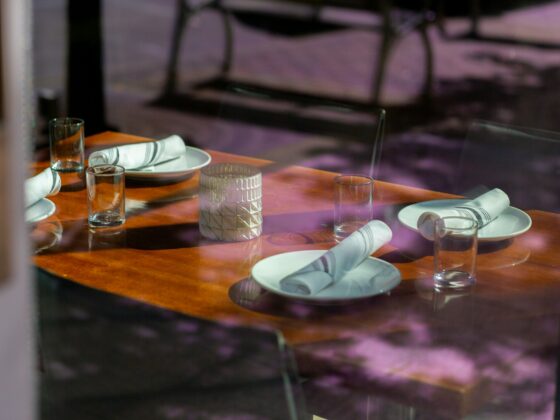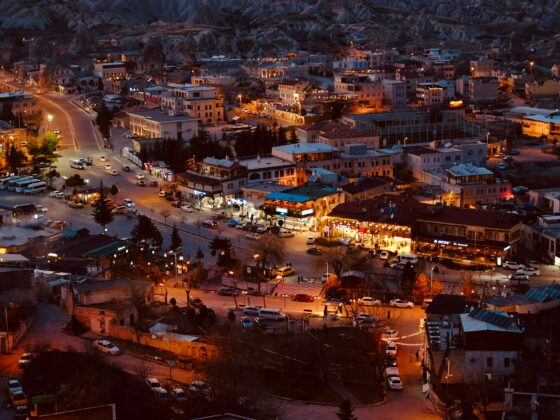It’s been a busy summer for Bedrock. The city that the real estate firm wagered would finally boom after so many busts has finally come to pass. But not just any city: Detroit, long a symbol of decline, is among the hottest real estate markets in the nation. Industry is returning, investments are flowing and long-neglected historic properties, like Grand Central Station, are getting million-dollar makeovers.
Few have scrutinized this coming change so scrupulously as Andrew Leber, VP of hospitality for Bedrock. Since 2011, the real estate group—part of the Rocket family of companies—has invested $3.5 billion in acquiring and developing more than 140 properties in Detroit and Cleveland.
Their efforts to make Detroit a place “to live, work, stay and play” crystallize in Shinola Hotel, a boutique property named for the luxury goods retailer rooted in the city’s history and culture, which celebrated its fifth anniversary in June. Its reputation as “Detroit’s Living Room” was put to its greatest test in late April, when the city hosted the 2024 NFL Draft, drawing more than a reported 775,000 visitors to Campus Martius Park and Hart Plaza just two blocks away. Leber spent much of the draft sprinting with his team from one downtown Bedrock property to another, calling it “two and a half days of insanity.”
Detroit’s evolution is underway and he credits the Shinola as a catalyst for changing the narrative. “People are talking about the city in a different way, and I think the hotel did a lot to amplify that message,” Leber said.
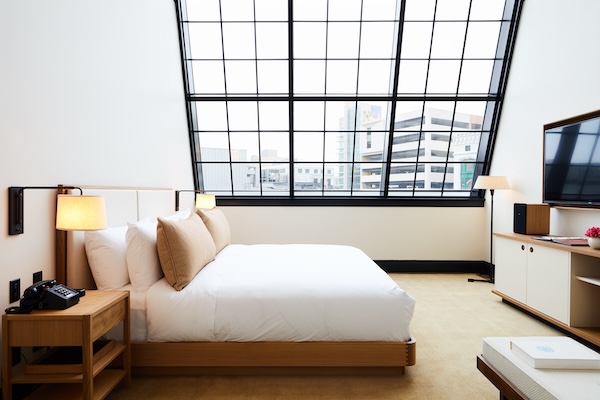
NOT ENOUGH ROOM
Shinola Detroit creator Tom Kartsotis and Dan Gilbert of Rocket Mortgage, Shinola Hotel’s first investors, agreed that the Detroit of the future needed a quality hotel to serve guests and residents alike in equal glamor. As their cornerstone they chose a 100-year-old former Singer Sewing Machine headquarters on historic Woodward Avenue.
But transforming the property would take five years and a hardy logistical imagination to complete. One of the biggest initial challenges was that the developers couldn’t get enough rooms into the blueprint. They had to expand to an adjacent property, move the existing tenants, build an additional structure over a former parking lot and connect it with a four-story bridge to the rest of the hotel. “The project ended up with super-complicated and super-clunky floor plans. It was really challenging to get not only the right room count, but also get generous-sized rooms you’d be comfortable staying in,” Leber said.
The property’s changes in elevation led to a remarkable 54 room types for a 129-room hotel. It might not be the most efficient way to develop a hotel, but it allows guests a unique opportunity to never experience the same hotel twice.
“Because of those elevation changes, you get rooms that have sunken living rooms, or you have elevated bedroom areas,” Leber said. “It’s really unique and shows off the special nature of what we have here.”
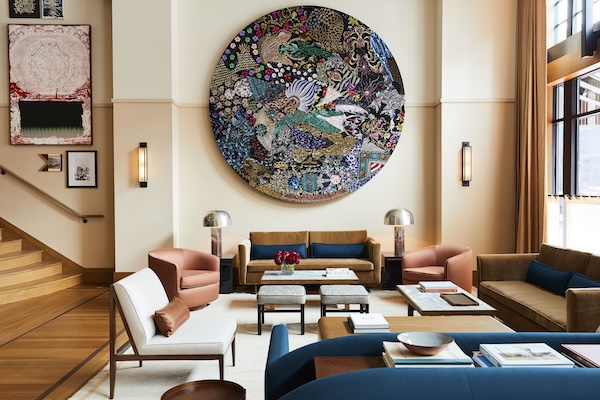
RETAIL INTO HOTEL
Shinola’s luxury product staples—watches, leather goods, jewelry and audio equipment—were an ample palate for interior design firm Gachot Studios to design and decorate. A past collaborator versed in both hospitality and Shinola stores, Gachot incorporated aesthetic touches like fine wood paneling and plush leather furniture, as well as serendipitous discoveries from the old Singer building discovered during demolition.
One such detail is a long-lost shade of blue paint uncovered during reconstruction. Gachot matched and recreated it as “Shinola Navy Blue,” a color that adorns the interiors. The hotel’s public spaces include Shinola-brand record players with Detroit-centric vinyl collections, and its walls feature artwork by Detroit natives, such as Charles McGee, Tiff Massey and Jason Revok.
But some details are likely to be recognized only by Shinola die-hards, like the shower fixtures designed by Waterworks for guestrooms modeled after Shinola’s distinctive, four-rivet signature on the back of their watches. “It’s just a small nod that I don’t think most hotels or design firms would think about, but that’s such a great concept for a company that makes fine- tuned machines like watches. Their craft is in details like that,” Leber said.
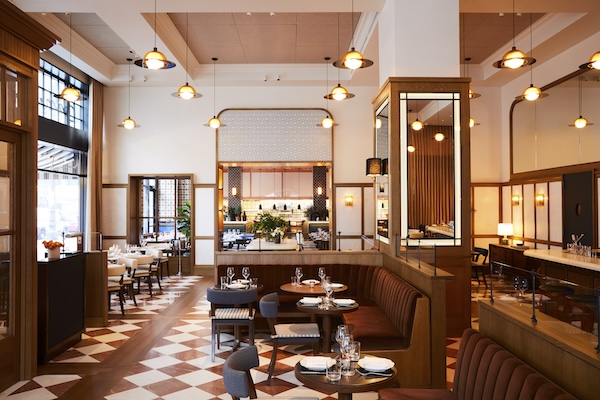
PARKER’S ALLEY
Any hotel named for a lifestyle brand will feature some shopping opportunities, but Parker’s Alley—constructed in the void beneath its four-story bridge—is innovative.
Named for Thomas Parker, an ex-slave and one of Detroit’s first free Black landowners, the retail space is both a local business showcase and an opportunity for thriving startups to have their own brick-and-mortar retail space. Parker’s Alley features a variety of travel-adjacent products and purveyors including the jewelry company Rebel Nell and Madcap Coffee, which also brews coffee for Shinola’s various F&B outlets.
Along Woodward is a full-size Shinola store, as well as The Lip Bar, a one-time Parker’s Alley inhabitant run by “Shark Tank” alum Melissa Butler that was so successful it needed its own storefront.
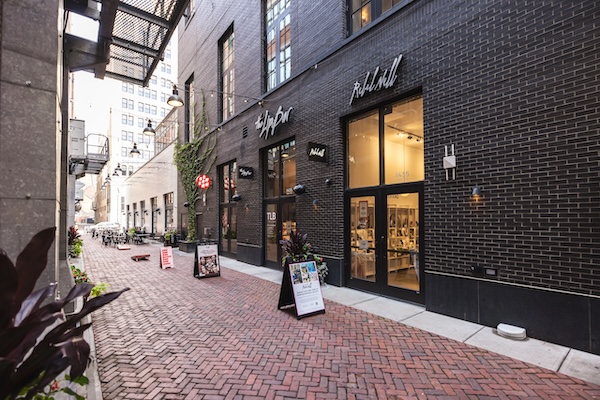
DETROIT’S LIVING ROOM
On May 14, just weeks after the NFL draft, Shinola Hotel hosted its fifth anniversary with an exclusive ticketed dinner event open to the public. Presiding over the menu were executive chef and managing partner of Shinola Hotel, Cory Barberio and Andrew Carmellini of NoHo hospitality, both Michigan natives.
The hotel has become as much for natives as visitors. A rotating lineup of DJs perform for the public every Tuesday night, while event spaces like Bixby Hall and the stunning rooftop atrium The Birdy Room have become in-demand wedding venues.
But Bedrock’s mission isn’t finished just yet. Roost Detroit, another Bedrock property, was named to Travel & Leisure’s “Top 100 New Hotels of 2024.” There are plans to break ground on a future headquarters for General Motors. But without Shinola, Leber said, this Detroit of the future might have stayed a daydream. “Shinola paved the way for a lot of interest in the market in the city,” he said. “People have not thought of Detroit as a travel destination and they really should. There is something special happening here, and more people need to experience it.”



